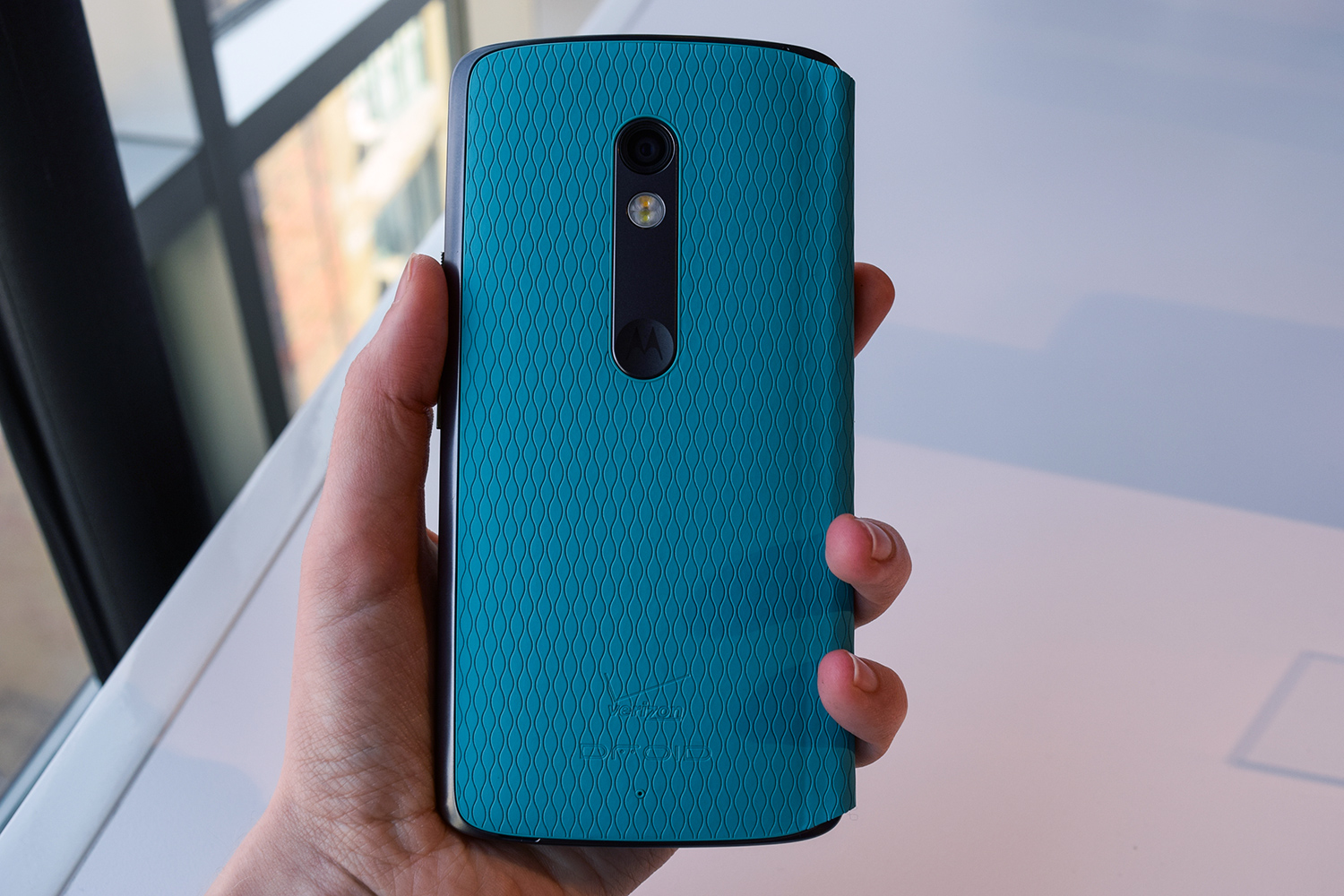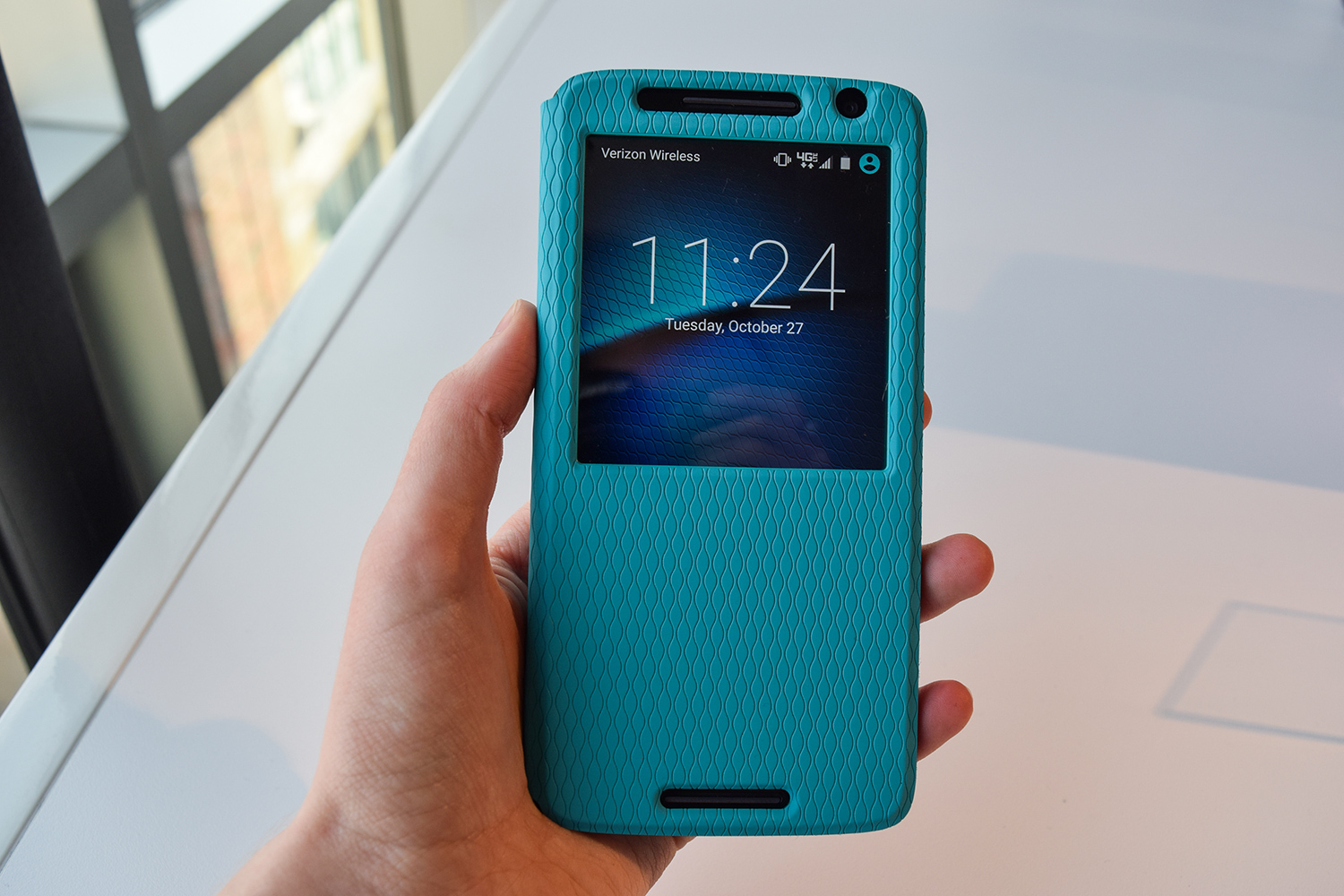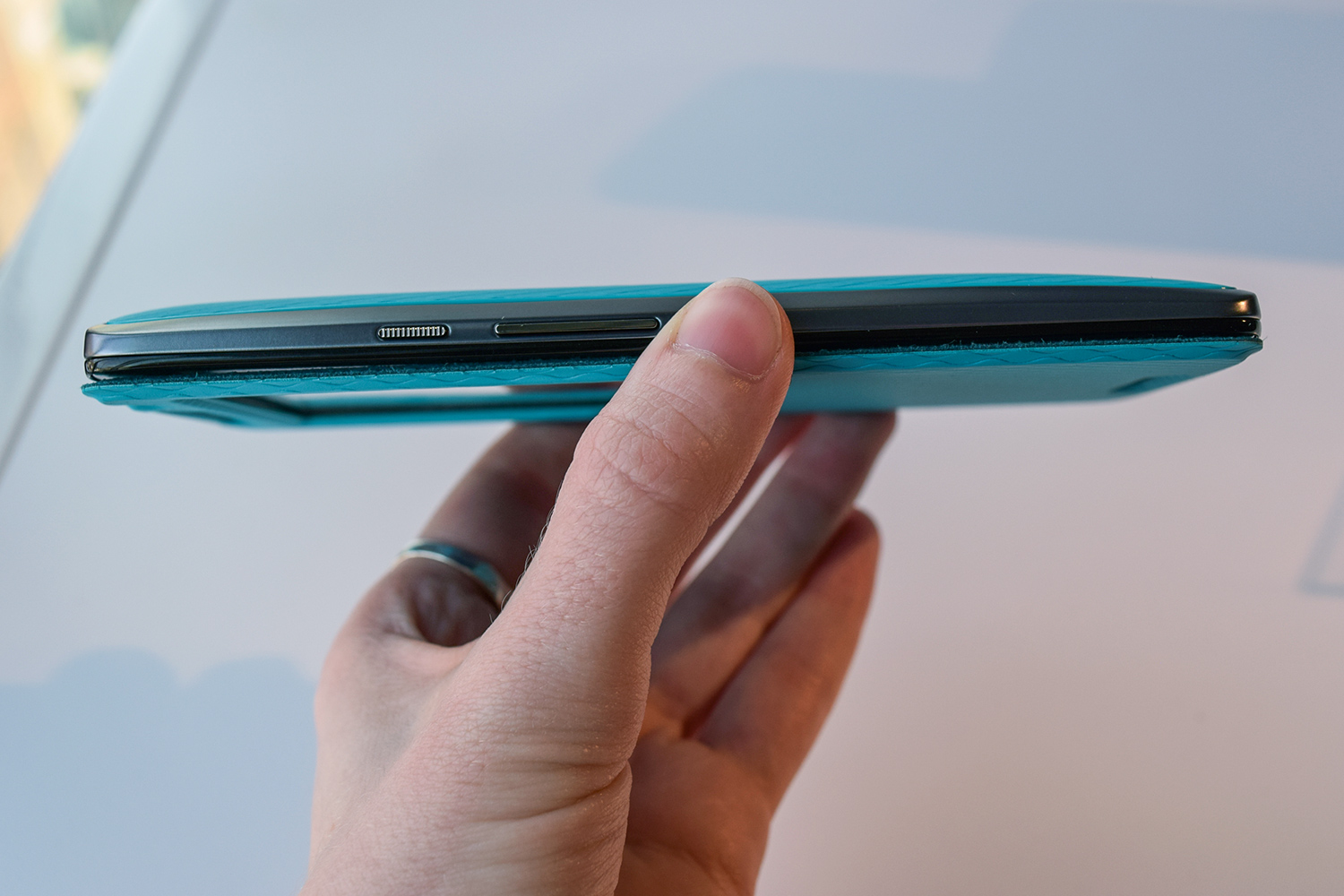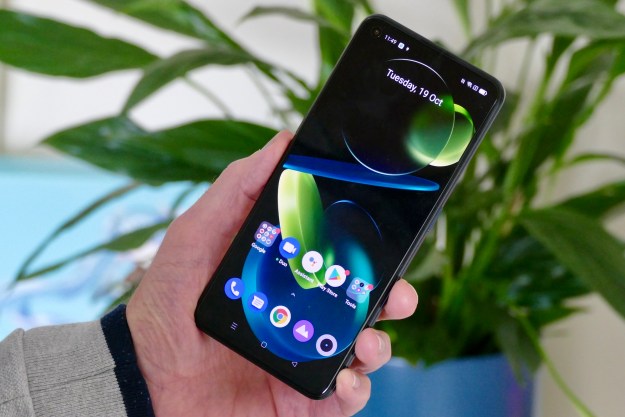Verizon has announced the Droid Turbo 2 and the Droid Maxx 2. The former is the sequel to last year’s impressive Droid Turbo, but with an exciting new tech called Shattersheild, which protects the device’s screen from the terrors of being dropped on the ground. Introduced by Motorola’s Rick Osterloh, he dropped the phone on stage several times, from above waist height, to show off its durability.
The shatter proof shield, a world-first innovation according to Osterloh, is a new type of screen that consists of five layers to absorb shock — Verizon guarantees it won’t shatter. There’s an aluminum core, an AMOLED flexible screen, a dual-touch layer to make sure the touch control still operates in the event of a fall, an interior lens, and finally, an exterior lens. It’s pitched as having “unprecedented durability.”
Beyond the screen, the Droid Turbo 2 is the first Droid phone to be customizable using Moto Maker, with more than a thousand options available. Inside is a 3,760mAh battery for 48 hours of use, and the phone has fast charging, which gives 13 hours of use in only 15 minutes.
The lightweight phone has a 5.4-inch 2,560 x 1,440 pixel screen, and is powered by a Snapdragon 810 processor. A big 21-megapixel camera is on the rear, and a 5-megapixel, wide-angle camera sits above the display. Motorola says it’s taking away the anxiety from smartphone ownership, but not sacrificing top-level specs.
In addition to the Droid Turbo 2, Motorola and Verizon also introduced the Droid Maxx 2. We don’t know much about it yet, but it has a 5.5-inch 1080p screen, with a large 3,630mAh battery for 48 hours of use. There’s plenty of storage with a 128GB MicroSD card slot, and although there’s no Moto Maker, there are a variety of cases and rear covers.
Verizon’s putting these two phones on sale very quickly, and will have the 32GB Droid Turbo 2 for $26 per month, and the 64GB model for $30; the latter coming with an option to upgrade to the sequel version next year. The Droid Maxx 2 is a little cheaper at $16 per month, plus the original Droid Turbo will continue in Verizon’s range for $20 per month.
Both phones will be sold online and in stores, within the next two days. Additionally, Verizon’s running a trade-in offer with up to $300 off a Droid 2, depending on the device you offer them. Interestingly, and to prove how common the problem is, it’ll accept phones with cracked or broken screens. Just don’t expect them to get the full $300 trade-in price.
We’ll update here when Verizon puts the Droid Turbo 2 and Maxx 2 live on its site.
Editors' Recommendations
- How to turn your old phone into a security camera
- Your Google One plan just got 2 big security updates to keep you safe online
- Your Apple Watch’s SpO2 sensor might be a lot better than you thought
- The Realme GT 2 Pro has a crazy wider-than-wide-angle camera
- OnePlus Nord CE 2 5G has 65W charging, coming on February 17












